7 out of 10 people taking STELARA® saw at least 75% clearer skin at 12 weeks
TOPICAL CREAMS
Used directly on the surface of your skin
The exact cause of plaque psoriasis is unknown. However, we do know that the immune system, environmental factors, and family history can play a role. The immune system speeds up, which causes inflammation and a large number of skin cells to grow. Instead of falling off (shedding), the cells pile up on the surface of the skin, forming psoriatic plaques.
Learn more about the role of the immune system in plaque psoriasis and what plaque psoriasis looks like.
Your doctor will prescribe a plaque psoriasis treatment for you based on many things, including how severe and where your plaque psoriasis is on your body, your age, and your medical history. Some common treatments include:
TOPICAL CREAMS
Used directly on the surface of your skin
LIGHT THERAPY
Your skin, or just the psoriatic plaque, is exposed to ultraviolet light
(UVB rays or Psoralen plus UVA rays [PUVA])
BIOLOGICS
Injectable treatments that target a possible cause of your psoriasis
ORAL SYSTEMIC THERAPIES
Pills that work either throughout the body or on a specific target
For more information about treatment options, go to Plaque Psoriasis Treatments.
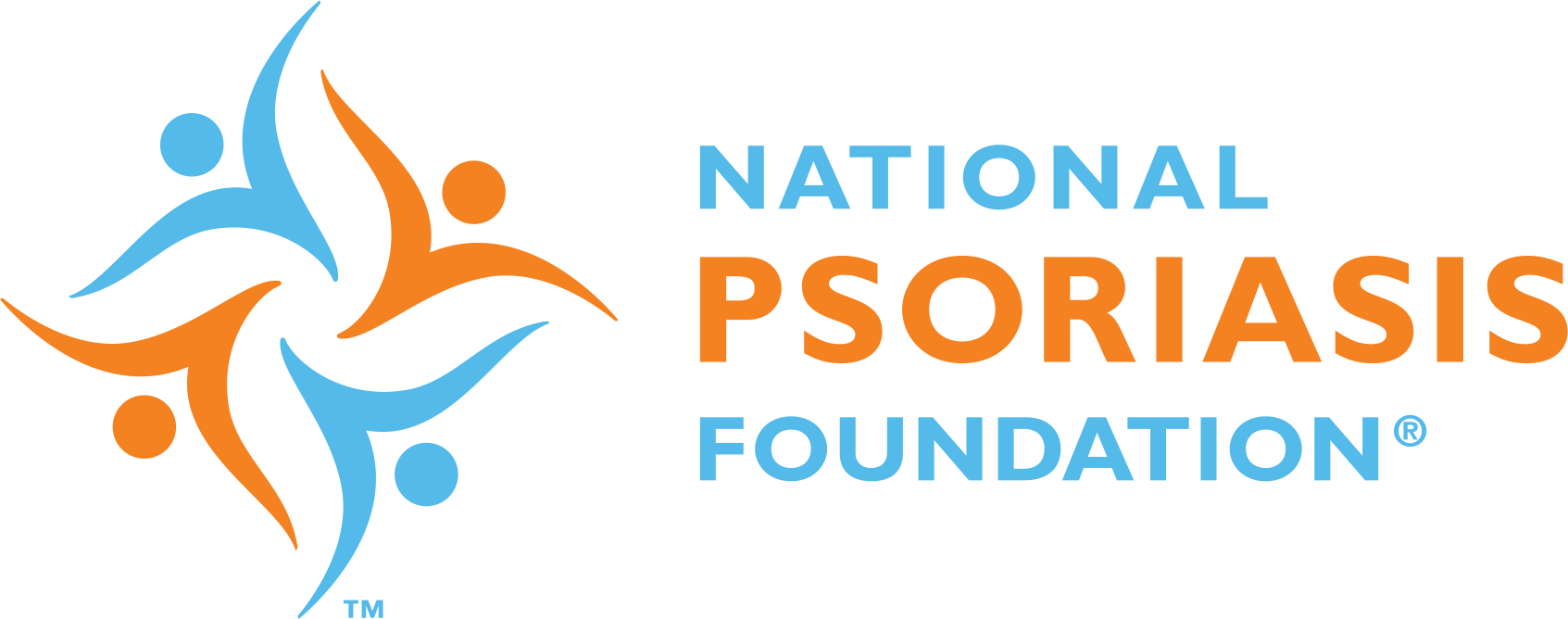
The National Psoriasis Foundation is a non-profit organization that provides an online community for patients to connect with others along with news, information and resources about plaque psoriasis. For a more extensive list of psoriasis-related resources, go to Plaque Psoriasis Links.
The exact cause of psoriatic arthritis is unknown. However, we do know that the immune system and genetics may play a role. The immune system speeds up, attacking healthy cells and tissue, which can cause joint pain, stiffness, and swelling, as well as plaque thickness, scaling, and redness.

NSAIDS
Over-the-counter oral medications can help decrease the pain
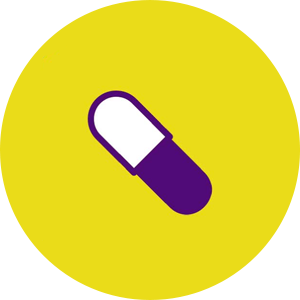
ORAL SYSTEMIC THERAPY
Prescription pills that work either throughout the body or on a specific target
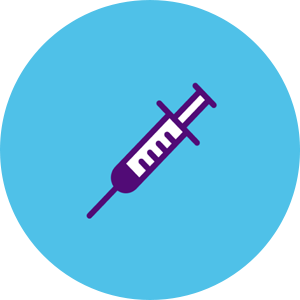
BIOLOGIC INJECTIONS
Injections under the skin that target a possible cause of your psoriatic arthritis

BIOLOGIC INFUSIONS
Treatments infused via an IV into the bloodstream that target a possible cause of your psoriatic arthritis
There is currently no known cure for psoriatic arthritis. However, there are several categories of medications used for the treatment of psoriatic arthritis. NSAIDs, like aspirin or ibuprofen, help decrease pain. Disease-modifying antirheumatic drugs (DMARDs), such as methotrexate and other oral options, treat pain and swelling of joints. Biologics, like STELARA®, target specific parts of the immune system. By finding a treatment that works best for you, it is possible to find relief from your symptoms of joint pain, swelling, and stiffness, as well as plaque thickness, scaling, and redness.
The Arthritis Foundation offers guidance and support for those living with psoriatic arthritis as well as tools, resources, and opportunities to get involved with the organization. For a more extensive list of psoriatic arthritis-related resources, go to Psoriatic Arthritis Links.
STELARA® is a prescription medicine used to treat adults and children 6 years and older with moderate or severe plaque psoriasis who may benefit from taking injections or pills (systemic therapy) or phototherapy (treatment using ultraviolet light alone or with pills).
STELARA® is a prescription medicine used to treat adults 18 years and older with active psoriatic arthritis. STELARA® can be used alone or with the medicine methotrexate.
The convenient dosing of STELARA® offers a full 12 weeks between treatments after two starter doses. STELARA® is a 45 mg or 90 mg injection given under the skin as directed by your doctor at weeks 0, 4, and every 12 weeks thereafter. It is administered by a healthcare provider or self-injected only after proper training. Each injection is given using a small needle. STELARA® is available in 45 mg or 90 mg doses; your doctor will choose the right dose of STELARA® for you. You will start off by taking the first starter dose of STELARA®, followed by a second starter dose four weeks later. You will then receive a maintenance dose every 12 weeks thereafter.
STELARA® is a 45 mg or 90 mg injection given under the skin as directed by your doctor at weeks 0, 4, and every 12 weeks thereafter. It is administered by a healthcare provider or self-injected only after proper training. Each injection is given using a small needle. STELARA® is available in 45 mg or 90 mg doses; your doctor will choose the right dose for you. Make sure you keep all your scheduled follow-up appointments. If your doctor decides that you or a caregiver may give your injections at home, you should receive training on the right way to prepare and inject STELARA®. Do not try to inject yourself until you or your caregiver have been properly trained by a healthcare provider.
Only your doctor can decide how long you will need to continue treatment with STELARA®.
No. STELARA® is not a steroid. STELARA® targets an underlying cause of plaque psoriasis and psoriatic arthritis—an overactive immune system. It blocks the action of IL-12 and IL-23, two proteins that may play a role in plaque psoriasis and active psoriatic arthritis.
The active ingredient in STELARA® is called ustekinumab. The other ingredients are sucrose, L-histidine, and polysorbate 80. STELARA® is manufactured by: Janssen Biotech, Inc., Horsham, PA 19044, License No. 1864 at Baxter Pharmaceutical Solutions, Bloomington, IN 47403
Janssen Biotech is a world leader in biomedical research and development that continues to discover and deliver innovative biologic treatments such as STELARA®. To learn more, please visit Janssen.com.
The best place to get more information is from your doctor. You can also read the Medication Guide and Full Prescribing Information, or sign up to get more information on plaque psoriasis or get more information on psoriatic arthritis. If you have more questions, feel free to contact Janssen CarePath for STELARA® at 877-CarePath (877-227-3728), Monday-Friday, 8 AM to 8 PM ET.

To hear from others like you, visit our YouTube channel: PsoriasisMatters to watch patient stories.
STELARA® is not for everyone; only your doctor can decide if it’s right for you. STELARA® is a prescription medicine that affects your immune system. It can increase your chances of having serious side effects including infections, cancer, serious allergic reactions, lung inflammation and a rare condition called posterior reversible encephalopathy syndrome.
Please read the Important Safety Information below and the Medication Guide for STELARA® to learn more about these and other risks for STELARA®. Discuss any questions you have with your doctor.
The most common side effects of STELARA® include: nasal congestion, sore throat, and runny nose, upper respiratory infections, fever, headache, tiredness, itching, nausea and vomiting, influenza, redness at the injection site, vaginal yeast infections, urinary tract infections, sinus infection, bronchitis, diarrhea and stomach pain.
These are not all of the possible side effects with STELARA®. Tell your doctor about any side effect that you experience. Ask your doctor or pharmacist for more information. You may report side effects to the FDA at 1-800-FDA-1088.
You should avoid receiving live vaccines while taking STELARA®. Before receiving STELARA®, tell your healthcare provider if you have recently received or are scheduled to receive an immunization (vaccine). Tell your healthcare provider if anyone in your house needs a vaccine. The viruses used in some types of vaccines can spread to people with a weakened immune system, and can cause serious problems. You should avoid receiving the BCG vaccine during the one year before taking STELARA® or one year after you stop taking STELARA®. Non-live vaccinations received while taking STELARA® may not fully prevent disease.
Everyone responds to treatment differently.
In a medical study:

7 out of 10 people taking STELARA® saw at least 75% clearer skin at 12 weeks

6 out of 10 people had their plaque psoriasis rated as cleared or minimal at 12 weeks
STELARA® may help with symptoms of joint pain, swelling, and stiffness. In a medical study, about half of patients taking STELARA® experienced a 20% improvement in their joint symptoms at 24 weeks. Also, nearly 6 out of 10 people saw at least 75% clearer skin.
Individual results may vary.
STELARA® is a biologic medication. Biologics are injectable treatments that deliver the medication into the body to target specific proteins within your body that may play a key role in your plaque psoriasis. STELARA® specifically targets two proteins, IL-12 and IL-23.
STELARA® is a biologic medication. Biologics are injectable treatments that deliver the medication into the body to target specific proteins within your body that may play a key role in your psoriatic arthritis. STELARA® specifically targets two proteins, IL-12 and IL-23.
The first step in self-injecting is for you and your doctor to decide if self-injection is right for you. If your doctor decides that you or a caregiver may be able to give your injections of STELARA® at home, you should receive training on the right way to prepare and inject STELARA®. Do not try to inject STELARA® yourself until you have been shown the right way to give the injections by your doctor or nurse. Please note that your first dose will always be given at the doctor’s office.
Please read the Important Safety Information below and the Medication Guide for STELARA® to learn more about these and other risks for STELARA®. Discuss any questions you have with your doctor.
If you see a small amount of tiny particles that are white, or that you can see through, don’t worry, that is okay. Do not use the prefilled syringe if the liquid looks frozen, discolored, cloudy, or contains large particles. If you have any questions about what is normal and what is not, call 1-800-JANSSEN (1-800-526-7736).
You can inject in several places. It is recommended that you inject in your thighs or stomach area. If you choose your stomach, stay 2 inches away from your belly button. If possible, do not inject into an area that is tender, bruised, red, or hard.
If you see a small amount of blood or liquid where you injected, that is normal. Just press a cotton ball or gauze pad to it, if needed. Do not rub. If you want, you can cover the area with an adhesive bandage.
If your doctor decides that a caregiver or a friend may give your injections at home, he or she should receive training on the right way to prepare and inject STELARA®. He or she should not inject you until trained by a healthcare provider.
Our nurses are available 7 days a week to answer your questions about the injection process. For assistance, call Janssen CarePath for STELARA® at 877-CarePath (877-227-3728), weekdays, 9 AM to 8 PM ET, weekends, 9AM to 5PM ET. At all other times, a nurse will return your call in about 15 minutes. You can also watch our self-injection video on our Injection Support page.
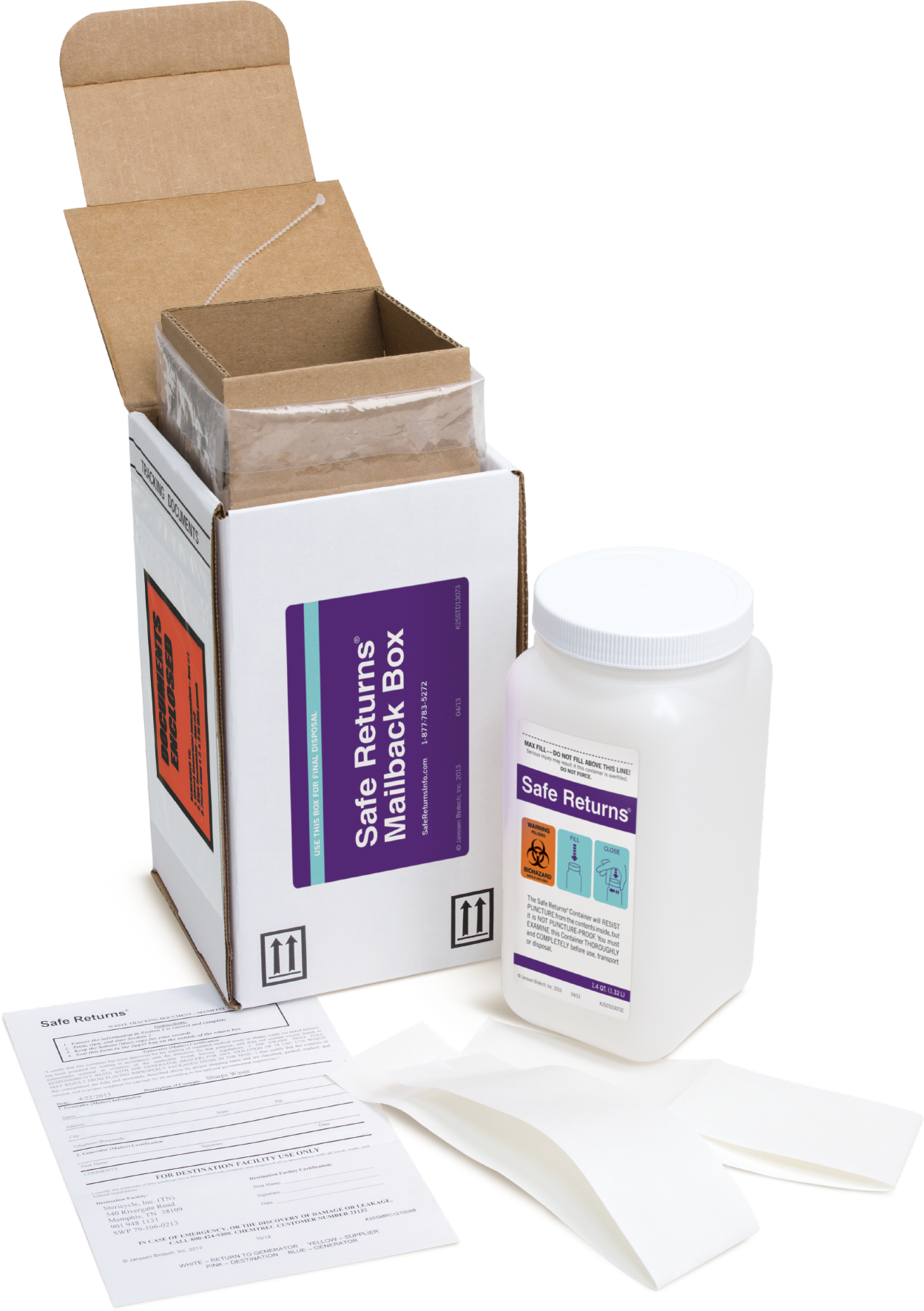
Put the used syringe in a puncture-resistant container (sharps disposal container) right away after use. Do not throw away loose syringes in your household trash. Follow your community’s guidance for the right way to dispose of your sharps container. Always keep the sharps disposal container out of the reach of children. Call Janssen CarePath for STELARA® at 877-CarePath (877-227-3728), Monday-Friday, 8 AM to 8 PM ET, for a free sharps disposal container.
Do not miss any doses of STELARA®. If you forget to use STELARA® at your scheduled time, call your healthcare provider.
STELARA® must be stored in the refrigerator (but NOT in the freezer compartment). STELARA® should not be frozen or shaken. Keep the product in the original carton to protect it from light until the time of use. Refrigerate it immediately at 36°F to 46°F (2°C to 8°C). Never keep STELARA® beyond the expiration date printed on the carton and the label. If your STELARA® has been stored outside of the recommended temperature ranges, contact Janssen Medical Information at 1-800-JANSSEN (1-800-526-7736) for more information.
Understanding your insurance coverage can be tricky. Since coverage policies can vary from plan to plan, it’s important to check if your pharmacy and medical benefits cover STELARA®. Janssen CarePath Care Coordinators can help you learn about and verify your insurance benefits. They’ll also help explain your potential out-of-pocket medication costs for STELARA®. You can contact Janssen CarePath at 877-CarePath (877-227-3728), Monday-Friday, 8 AM to 8 PM ET. Please have your insurance information available when you call.
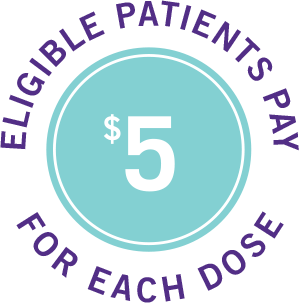
If you use commercial or private health insurance to pay for your medication:
Janssen CarePath Savings Program for STELARA®
Eligible patients using commercial insurance can save on out-of-pocket medication costs for STELARA®. Eligible patients pay $5 for each dose. Maximum program benefit per calendar year shall apply. Not valid for patients using Medicare, Medicaid, or other government-funded programs to pay for their medications. Terms expire at the end of each calendar year and may change. Program does not cover the cost to give you your treatment. See full eligibility requirements.
If you don’t have commercial or private health insurance, Janssen CarePath can provide information about other resources that may help with your out-of-pocket medication costs. You may also find help from the programs and resources found on JanssenCarePath.com.
STELARA® is indicated to treat moderate or severe plaque psoriasis in children ages 6 years and older who may benefit from taking injections or pills (systemic therapy) or phototherapy (treatment using ultraviolet light alone or with pills).
STELARA® is given as an injection under the skin every 12 weeks, after 2 starter doses at weeks 0 and 4. Following the starter doses, that's only 4 doses a year.
In children 6 years or older, it is recommended that STELARA® be given by a healthcare provider. If a doctor decides that you or a caregiver may be able to give your injections of STELARA® at home, you should receive training on the right way to prepare and inject STELARA®.
In a clinical study at 12 weeks, nearly 7 out of 10 adolescent patients (ages 12-17) with moderate to severe plaque psoriasis were rated as cleared or minimal and 8 out of 10 saw at least 75% clearer skin. Individual results may vary.
STELARA® is also approved for pediatric patients ages 6-11.
The safety and effectiveness of STELARA® has been established in both adolescent and pediatric* patients.
*Pediatric patients knew they were on STELARA® for the entire study.